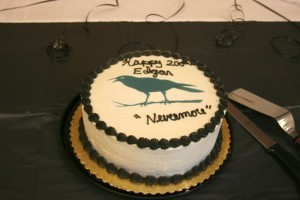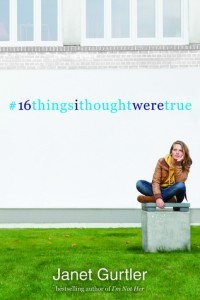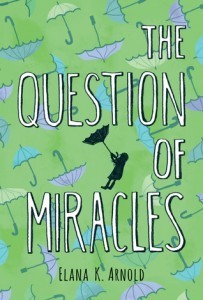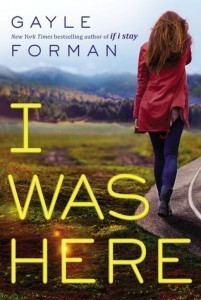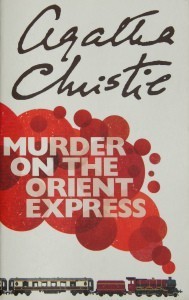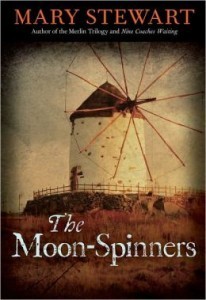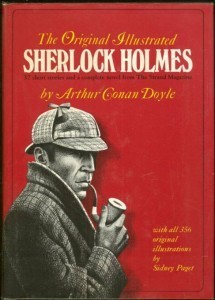Lea Wait's Blog, page 296
March 18, 2015
Talking Heads
 Kaitlyn Dunnett here. Earlier this month I finished the first of numerous drafts of what will eventually be published in 2016 as the tenth Liss MacCrimmon mystery, Kilt at the Highland Games. My preferred name for this version is the “rough draft” because it is, indeed, very very rough writing. Other writers have other names for it, many of them scatological. This is the draft that no one else will ever see, the one that reads like the work of a rank amateur, full of typos, continuity errors, and other even more egregious sins. A few extremely rare individuals are able to write just one nearly perfect draft the first time around. I suspect this is because they were revising in their heads as they wrote. I also suspect they’d register at genius level on an IQ test.
Kaitlyn Dunnett here. Earlier this month I finished the first of numerous drafts of what will eventually be published in 2016 as the tenth Liss MacCrimmon mystery, Kilt at the Highland Games. My preferred name for this version is the “rough draft” because it is, indeed, very very rough writing. Other writers have other names for it, many of them scatological. This is the draft that no one else will ever see, the one that reads like the work of a rank amateur, full of typos, continuity errors, and other even more egregious sins. A few extremely rare individuals are able to write just one nearly perfect draft the first time around. I suspect this is because they were revising in their heads as they wrote. I also suspect they’d register at genius level on an IQ test.
I am not one of them.
 Like most writers I know, I slog through this initial effort wondering how I ever thought I could write anything longer or more complicated than a grocery list. It’s tough to keep going, knowing that what I’ve already put down on paper is garbage. Partway through, I do go back and fix a few things. I move some scenes around and add others. I might even insert a clue, if I’ve thought of some twist that will be important later in the story. For the most part, though, I force myself to keep plodding along, moving steadily toward the end of the novel. My chapters generally consist of three scenes. I try to rough out at least one new scene each day. I don’t aim for a specific word count, although most days I seem to end up with 1000 to 1500 new words. They aren’t great words, you understand, but each one brings me closer to completing a draft of the novel.
Like most writers I know, I slog through this initial effort wondering how I ever thought I could write anything longer or more complicated than a grocery list. It’s tough to keep going, knowing that what I’ve already put down on paper is garbage. Partway through, I do go back and fix a few things. I move some scenes around and add others. I might even insert a clue, if I’ve thought of some twist that will be important later in the story. For the most part, though, I force myself to keep plodding along, moving steadily toward the end of the novel. My chapters generally consist of three scenes. I try to rough out at least one new scene each day. I don’t aim for a specific word count, although most days I seem to end up with 1000 to 1500 new words. They aren’t great words, you understand, but each one brings me closer to completing a draft of the novel.
My rough drafts are always considerably shorter than the finished book. Each time I revise, the word count goes up. My contract for the Liss MacCrimmon series requires that the manuscript I send in be between 75,000 and 100,000 words in length. I’ve had some rough drafts come in at around 70,000 words. Others were closer to 60,000. In every case, during revision, I had no trouble hitting 75,000, although my books don’t tend to be much longer than that. The word count at the end of the day I officially wrote the last scene in the last chapter of Kilt at the Highland Games for the first time was 50,829.
Oops.
And yet, not a crisis. I already have ideas for beefing up the subplot, which kind of fell by the wayside as I concentrated on the primary mystery, a case that involves both missing persons and murder. It would have been nice to start revising with a longer rough draft, but it’s not an impossible task to add another 25,000 words. How? Well, not by throwing in any old words just to get the word count up. That’s called padding and it is always painfully obvious to readers. No, a big part of the solution lies in looking at all those scenes that, at present, consist of talking heads.
 You know the ones I mean—two or three characters are together somewhere. Maybe they are meeting to exchange information, or one is interrogating the other, or this is just a casual encounter but the dialogue contains a clue that will be important later. Whatever the reason, they talk. The dialogue is written. Maybe it will need a little tweaking, but essentially what they say to each other moves the story forward. But therein lies the problem—these scenes are almost all dialogue. Talking heads. There’s no sense of place. There are no indications, other than in the words they speak, of how the characters feel about or react to each other. Without descriptive, especially sensory, details, scenes with talking heads are flat and uninteresting, no matter how important the information in the dialogue.
You know the ones I mean—two or three characters are together somewhere. Maybe they are meeting to exchange information, or one is interrogating the other, or this is just a casual encounter but the dialogue contains a clue that will be important later. Whatever the reason, they talk. The dialogue is written. Maybe it will need a little tweaking, but essentially what they say to each other moves the story forward. But therein lies the problem—these scenes are almost all dialogue. Talking heads. There’s no sense of place. There are no indications, other than in the words they speak, of how the characters feel about or react to each other. Without descriptive, especially sensory, details, scenes with talking heads are flat and uninteresting, no matter how important the information in the dialogue.
As I revise, that’s what I’ll be looking for—not details to pad but details that enhance. I’ll be trying to imagine what each character sees and hears, what impinges upon him or her as the dialogue continues. There are endless possibilities. Is it raining? Uncomfortably hot and humid. Dusty? This novel is set in July, so I won’t have to wonder if they freezing their butts off trying to find privacy by slipping outside in mid-February, but whenever a story is set, the physical environment should play a role.
 That includes other people. Who else is around, both near at hand and at a distance? Are there animals in the scene? And what about the sound the speakers hear? Does something momentarily distract one of the characters from an exchange of words? Maybe what’s important to mention is that a character sees or hears something but doesn’t pay attention to it at the time. Whether it’s with action, descriptive details, physical reactions, or the addition of the thoughts of the point of view character, scenes that feature taking heads can be salvaged . . . and so can the roughest of rough drafts.
That includes other people. Who else is around, both near at hand and at a distance? Are there animals in the scene? And what about the sound the speakers hear? Does something momentarily distract one of the characters from an exchange of words? Maybe what’s important to mention is that a character sees or hears something but doesn’t pay attention to it at the time. Whether it’s with action, descriptive details, physical reactions, or the addition of the thoughts of the point of view character, scenes that feature taking heads can be salvaged . . . and so can the roughest of rough drafts.
March 17, 2015
Growth Spurt

Hello again from Sarah Graves, writing to you from beneath fourteen feet of snow in Eastport, Maine, and what better location for some gardening dreams? Snow is the poor (wo)man’s fertilizer, after all, and considering how much of it we’ve gotten we should all be harvesting giant string beans and house-sized tomatoes come August. Personally, I feel I put up with enough “fertilizer” all year round, but never mind; at left is a hydrangea that came as a “free gift” (my favorite kind!) with a nursery order. They’re not supposed to like wintering indoors but this one didn’t read its own instructions, apparently.
 At right is a three-dollar Walmart orchid, about a year old. It’s in a north window and has been re-potted once, with new bark chips, and given a half-hour water plunge each week. For that piddling amount of trouble it has repaid me with big purple blooms that last and last, even putting up a whole new stalk of them instead of going dormant as I’d expected. The one you see here is the tail end of the flowering. I’m going to clip off the flower stems soon, and hope it takes a well-deserved rest. I don’t know what to do to make it take its nap, though, and I confess I’ll be watching to see if it stubbornly puts out even more flower stalks from the small bumps on the bits of stalk remaining. If you’ve got three bucks and a north window, you might want to bring one of these home.
At right is a three-dollar Walmart orchid, about a year old. It’s in a north window and has been re-potted once, with new bark chips, and given a half-hour water plunge each week. For that piddling amount of trouble it has repaid me with big purple blooms that last and last, even putting up a whole new stalk of them instead of going dormant as I’d expected. The one you see here is the tail end of the flowering. I’m going to clip off the flower stems soon, and hope it takes a well-deserved rest. I don’t know what to do to make it take its nap, though, and I confess I’ll be watching to see if it stubbornly puts out even more flower stalks from the small bumps on the bits of stalk remaining. If you’ve got three bucks and a north window, you might want to bring one of these home.
 African violets like north light, too. This one is an offspring given to me by a neighbor who was trying to find homes for a lot of violet babies. That’s the trouble with violets; if they do poorly, they sulk and glare accusingly while drooping flabby yellow leaves and refusing to bloom. Happy ones, though, grow madly, flower exuberantly, and produce so many offshoots that you’re forced to divide them, and then what do you do with all those bouncing infants? Here also is a packet of seeds that I’m planning to start indoors soon, under the same lights I’m using now for more of the African violet baby-boom. Last year’s nursery-bought tomato plants had plenty of stem but not much root system, a deficiency I’m hoping to cure this time around with a nice fluffy seed-starting mixture, better-balanced nutrients, and lots of TLC overall.
African violets like north light, too. This one is an offspring given to me by a neighbor who was trying to find homes for a lot of violet babies. That’s the trouble with violets; if they do poorly, they sulk and glare accusingly while drooping flabby yellow leaves and refusing to bloom. Happy ones, though, grow madly, flower exuberantly, and produce so many offshoots that you’re forced to divide them, and then what do you do with all those bouncing infants? Here also is a packet of seeds that I’m planning to start indoors soon, under the same lights I’m using now for more of the African violet baby-boom. Last year’s nursery-bought tomato plants had plenty of stem but not much root system, a deficiency I’m hoping to cure this time around with a nice fluffy seed-starting mixture, better-balanced nutrients, and lots of TLC overall.
 Thomas Jefferson grew cardoons in his wonderful garden at Monticello, where today’s gardeners have recreated many of the flower and vegetable beds that flourished when he was there. The plant has beautiful blue flowers and grey-green frilly leaves on thick, celery-like stems that can be cooked and eaten — if you are very hungry, that is, and very determined. Because the thing is, first you cut the leafy portion off the stem, then peel off the tough stringy parts, then chop the trimmed stems and parboil them. And then you egg them and bread them and fry them, which seems to me like a whole lot of work for a vegetable dish. Nevertheless I am determined to try them — growing them, I mean, not necessarily eating them — this summer, mostly on account of the flowers.
Thomas Jefferson grew cardoons in his wonderful garden at Monticello, where today’s gardeners have recreated many of the flower and vegetable beds that flourished when he was there. The plant has beautiful blue flowers and grey-green frilly leaves on thick, celery-like stems that can be cooked and eaten — if you are very hungry, that is, and very determined. Because the thing is, first you cut the leafy portion off the stem, then peel off the tough stringy parts, then chop the trimmed stems and parboil them. And then you egg them and bread them and fry them, which seems to me like a whole lot of work for a vegetable dish. Nevertheless I am determined to try them — growing them, I mean, not necessarily eating them — this summer, mostly on account of the flowers.
 Here is a cardoon in bloom. I think you’ll agree it’s worth an experiment. Blue flowers are a particular favorite of mine, and spiky, ball-shaped blooms are also right up my alley. They give variety to the shapes in the garden, and since I tend to combine colors with the abandon of a toddler playing with crayons, it’s good to have plenty of blue to help pull it all together. White works well also, so there’ll be lots of white lobelia and Shasta daisies, white phlox, and if I can find any some white coneflowers. Oh, and white dahlias? I’ll have to order some. I’m a little afraid to go up to the attic to check on the dahlias we do have; ordinarily they winter over nicely there, wrapped up in newspapers and brown paper bags, but this winter has been a (insert expletive here) so fingers crossed — for the dahlias, and for spring which believe it or not really will be here soon.
Here is a cardoon in bloom. I think you’ll agree it’s worth an experiment. Blue flowers are a particular favorite of mine, and spiky, ball-shaped blooms are also right up my alley. They give variety to the shapes in the garden, and since I tend to combine colors with the abandon of a toddler playing with crayons, it’s good to have plenty of blue to help pull it all together. White works well also, so there’ll be lots of white lobelia and Shasta daisies, white phlox, and if I can find any some white coneflowers. Oh, and white dahlias? I’ll have to order some. I’m a little afraid to go up to the attic to check on the dahlias we do have; ordinarily they winter over nicely there, wrapped up in newspapers and brown paper bags, but this winter has been a (insert expletive here) so fingers crossed — for the dahlias, and for spring which believe it or not really will be here soon.
March 16, 2015
THE DREADED SYNOPSIS
 Vaughn Hardacker here. Many literary agents and publishers in the United States require that a synopsis (usually one page) accompany a query letter. I cannot think of anything that will make a writer shudder and curse more than being required to write a synopsis. In fact, many with whom I have spoken don’t really know what a synopsis should be and what one should not be. So with that in mind, let’s discuss the synopsis.
Vaughn Hardacker here. Many literary agents and publishers in the United States require that a synopsis (usually one page) accompany a query letter. I cannot think of anything that will make a writer shudder and curse more than being required to write a synopsis. In fact, many with whom I have spoken don’t really know what a synopsis should be and what one should not be. So with that in mind, let’s discuss the synopsis.
If requested (I recommend you never send a literary agent or an editor more than they ask for. Unless you are very, very confident in your abilities, each additional item you include with the query letter may give the agent/editor another source of information to use in rejecting you.) include a one page synopsis of your book. Unlike the query letter, whose purpose is to peak the agent/editor’s interest, the object of the synopsis is to provide a short overview of the book’s plot and major themes. Don’t make the mistake I made several years ago of trying to summarize the entire novel in two paragraphs; this is a pitch, not an outline. Therefore you should concentrate on those elements that are most likely to attract the attention of a reader/agent/editor. Some of these are: The primary characters, the basic plot, the setting, the primary source of conflict, and the theme. Let’s briefly look at each of these.
The Primary Characters. In the query you may only have room to introduce two or three major characters. The synopsis is where you should introduce all the major players (The first time I introduce a character I always type the name in CAPs).
The Basic Plot. Identify the basic what if? Keep in mind that plot is more than the sequence of events—it’s also the reason for them.
The Setting. When and where does the story take place? If the setting is crucial to the plot, say so. However, if the setting is merely background, don’t spend a lot of time describing it. There is nothing that will turn me off quicker than a travelogue that does nothing to move the plot along.
The Primary Source of Conflict. What are the key obstacles your protagonist must overcome? From where does the conflict originate? Is it external or internal or both. Is it with another character, society or nature? Focus on the conflict that is central to the plot.
The Theme. Is there an underlying message to the story? If there is what is it that is beyond the basic plot. Are any important issues revealed as a consequence of the theme? Be careful that you don’t sound as if you’re in a pulpit; you can raise questions or ideas without giving the reader a sermon.
Remember that the synopsis is supposed to illustrate that your novel is coherent, logical, carefully thought out and well written.
Cyberbullying and the Wild, Wild Web
Jayne here – sorry for posting so late, but I honestly forgot! The title of this post is the title of my new book I am currently writing. It will be aimed at adults, but I am hoping teens will get something out of it as well. I will be mostly writing about cyberbullying in schools from the middle grades on up through college/university and how adults can deal with it and know the signs of it. It should be coming out late 2016 or early 2017.
It is amazing how many students feel they will be punished if they talk to their parents or another adult about being cyberbullied. They are afraid their Internet and smartphone privileges will be taken away. I have to try to remove that stigma for them.
Almost every chapter will have a case about cyberbullying to open, then go into various advice modes and I will also have a chapter about parents of cyberbullies and how to get them to realize that what they are doing is wrong.
Here’s where I reach out to you – although I have a few parents and students who are willing to be interviewed, I am in need of more. If you know someone who was or is being cyberbullied and would be willing to let me interview them, please let me know. I can change their names to keep them anonymous if they want. If you know someone who was or is a cyberbully, the same goes. Email me at netcrimes@netcrimes.net with the info.
I can’t promise a free copy of the book (I am only getting 10 comp copies and those are going to family and friends already), but I can get you my author’s discount if you help me out.
Next question for you – what would you like to see covered? What questions do you have about cyberbullying you would like me to answer in my book?
Have a great St. Patrick’s Day tomorrow!
March 13, 2015
Weekend Update: March 14-15, 2015
 Next week at Maine Crime Writers there will be posts by Jayne Hitchcock (Monday), Vaughn Hardacker (Tuesday), Sarah Graves (Wednesday), Kaitlyn Dunnett (Thursday), and Vicki Doudera (Friday).
Next week at Maine Crime Writers there will be posts by Jayne Hitchcock (Monday), Vaughn Hardacker (Tuesday), Sarah Graves (Wednesday), Kaitlyn Dunnett (Thursday), and Vicki Doudera (Friday).
In the news department, here’s what’s happening with some of us who blog regularly at Maine Crime Writers:
It’s less than one month until Maine Crime Wave comes to South Portland on April 11. This all-day event features workshops and panels and folks from your friendly Maine Crime Writers blog are well represented. Adding to the excitement, there is also a pre-event event on at the Portland Public Library on Friday night. For details on that, click here: Two Minutes in the Slammer April 10 event
Lea Wait: Are you a teacher or school librarian whose students have read any of my historical novels set in 19th century Maine? I can still fit in some school visits or Skype visits this spring. For details, see my website, http://www.leawait.com. (Fifteen minute Skype visits are free!) In the coming week I’ll be Skyping for 90 minutes about my Wintering Well with fourth graders from Dexter, Maine, and then visiting seventh graders at the Bristol Consolidated School to share some prints and artifacts from the Civil War era and talk about Uncertain Glory.
Have you written a New England-based crime story? If so, you might want to enter it for the Al Blanchard Award. Here are the details:
The 2015 Al Blanchard Award
The 2015 Al Blanchard Award is open for submissions.
In memory of Al Blanchard, co-chair of the first three New England Crime Bake Conferences, the New England Crime
Bake Committee established the Al Blanchard Award to annually honor the best crime short story by a New England Writer or set in a New England setting.
THE PRIZE:
$100 cash award.
Publication in Level Best Books’ Crime Fiction anthology.
Admission to the Crime Bake Conference.
You’ll find guidelines and instructions on how to submit at http://crimebake.org/al-blanchard-award/
There is NO entry fee, and the deadline is April 30, 2015.
The winner is not required to attend conference.
Also open for submissions until April 30, 2015 are crime stories by New England writers for the next Level Best Books anthology. Details are here: http://levelbestbooks.com/submissions/
An invitation to readers of this blog: Do you have news relating to Maine, Crime, or Writing? We’d love to hear from you. Just comment below to share. Don’t forget that comments are entered for a chance to win our wonderful basket of books and the very special moose and lobster cookie cutters.
And a reminder: If your library, school, or organization is looking for a speaker, we are often available to talk about the writing process, research, where we get our ideas, and other mysteries of the business. Contact Kate Flora: mail to: kateflora@gmail.com
Random Thoughts, A Contest and Some Book Reviews.
John Clark bringing you some random thoughts as well as a bunch of book reviews. Thus far I’ve read 64 books in 2015 and reviewed most of them for various online entities. Even so, the TBR pile keeps growing…and growing… and growing. Since retirement is getting closer and this has been a pretty dismal winter in terms of any outside activities, I’ve changed my routine when getting home. I used to wash the dishes after supper and head up to my computer room immediately to do some library-related catching up. Now, I head for the recliner by the pellet stove and read for a couple hours before going upstairs. I’m beginning to think that an interesting book is the perfect rationalization for blowing off so-called responsible stuff. In addition, the sheer number of interesting books I discover every week are changing another long standing habit. I used to bull my way through a book no matter how bad it got. Now if I’m losing interest, I simply put it down and start another one. This is why almost every review I write is a positive one.
On to a challenge I hope some of you will accept. One of my down the road fantasies is to write a book with sixteen short crime stories, each one set in a different Maine county. One of the really cool things about our state is the number of unusual place names that are real. Ever been to Pripet? How about Wonderland, Pumpkin Valley, Sabino or Slab City (there are three of them). Given such a richness, one could spend hours just coming up with names for each story that would spur a reader’s imagination before they even start reading. Here are a few that I pulled off the top of my Head. The Revenge of the Roque Bluffs Rogue, A Plague of Poison Ployes in Plaisted, The Cardinal Sinner of Sabbathday Lake, Night of Nastiness in Norridgewock and The Twisted Temptress of T9, R7.

Hard to believe Katahdin will look like this not far in the future.
So, good readers, Below are the sixteen county names. Grab your handy Delorme Atlas or similar tool and come up with the best story titles for each one. Post them here or email them to me at berek@tds.net I will award the list I think is most creative with a worthwhile prize mailed to the winner after being announced in my next post here at MCW.
Androscoggin
Aroostook
Cumberland
Franklin
Hancock
Kennebec
Knox
Lincoln
Oxford
Penobscot
Piscataquis
Sagadahoc
Somerset
Waldo
Washington
York
Now for some reviews of books I’ve read recently that are worth sharing.
First up is Hung Up by Kristen Tracy, Simon Pulse reprint edition, 2015 ISBN: 9781442460775. We’ve all called the wrong number. Usually you apologize and hang up as soon as you realize your mistake, but what if? Lucy never meant to call James. She was trying to reach the deadbeat who accepted her money for a plaque she special ordered, but never received. After leaving several fairly irate messages, James picks up on the next one. This is where 99% of the time that would be the end of it, but this is that magical 100th call and it turns into an ongoing telephone relationship that segues from James identifying himself so Lucy might actually realize she got the person who inherited the deadbeat’s number, to a little bit of everything.
Lucy is extremely guarded for reasons that don’t come out until quite late in the book, but they’re very sad and very real reasons. Fortunately, James is pretty cool with her skittishness and has some quirks of his own. When their plan to go to his formal dance falls through and he fails to contact Lucy for several days, it could easily have been the deal breaker for their fragile, but evolving relationship. Instead, it helps her understand that he has family issues, that, while nowhere near as traumatic as hers, are still distressing to him. By the end of the book, readers will feel like they’ve been on an emotional roller coaster, wondering if these two are EVER going to meet face to face.
This is a smart, emotional read that will appeal to teens who have experienced loss or who are skittish about the dating scene. It has a touch of mystery mixed in with neat dialogue and romance. All in all, it’s another good book for libraries who care about offering decent reads to teens.
How (Not) To Find A Boyfriend by Allyson Valentine. Philomel Books, 2014. ISBN: 9780399257711. Sadly, the stereotype of the smart girl who thinks she must play dumb to be popular isn’t a fiction. In this book, Laura Fullbright is an extremely smart girl who decides when she changes high schools that she’ll hide her past academic achievements so she can become popular. She joins the cheering squad where her gymnastics experience makes her a valuable addition. Her best friend Krista who has been with the same guy since she was twelve, is pushing Laura to go out with Jake who is good looking, but dumber than a box of rocks. She’s tempted. After all, hasn’t her goal this year to be popular and shouldn’t that include a hot boyfriend?
Of course, things always get complicated when you try scripting your future. The day before school begins, Laura is playing soccer with her little brother when the ball goes astray. It’s kicked back by a stranger and hits her in the head. Enter Adam, new to town and possibly better looking than Jake. It’s instant swoon for Laura and she senses that there’s interest on Adam’s part.
Would that getting his attention long enough to pursue her attraction be so simple—Not. Laura makes mistake after mistake in her attempts to connect with him. After switching out of her AP classes to help cement her popularity quest, she discovers that Adam is probably her equal in the brains department, so she initiates a series of well-intentioned, but disastrous swaps with other kids in an effort to get in the same classes and work on some projects with him, all the while trying to keep Jake far enough away so she doesn’t have to go to the prom with him.
Reading as she navigates her way through this minefield, as well as finally realizing that being smart is as much a part of her as anything, is fun and cringeworthy in a very good way. The chemistry between Laura and Adam, coupled with her re-evaluation of her broken relationship with her dad, make this a great book for teens. Those who wrestle with the smart vs popular dilemma, who have parent estrangement issues and those who experienced high school social disasters will particularly enjoy this book. It’s a great one for any high school or public library.
#16thingsithoughtweretrue (16 Things I Thought Were True) by Janet Gurtler, Sourceboooks Fire 2014. ISBN: 9781402277979. Blame is a tricky thing. Morgan McLean has discovered this painful fact when the dancing she did boys underwear while singing, was filmed by her best friend and posted online. Needless to say, their friendship has fractured. If that weren’t bad enough, her mother starts having cardiac issues, scaring Morgan big time.
Mom can be quite the drama queen and has led Morgan to believe that her father abandoned mom as soon as he learned that she was pregnant. Morgan has no idea who he is or where he went. The cardiac issues, however, are enough to scare her mother into telling that she knows more about the absent dad than she’s let on. Morgan has to pry the information out bit by bit while trying to put the embarrassing video behind her.
When she gets a summer job at an amusement park, she has an immediate dislike for Adam, the slightly older guy who runs the staff. She’s not wild about her assignment in a gift shop, but with Mom ill and health coverage iffy, she needs money. In fact, she’s starting to think about giving her mother the money she’s saved so she can get far away and go to college.
Her conversations with Adam about her mom’s illness and his interest in becoming a doctor begin changing her initial impression, especially when he starts giving her emotional support as well as explaining what’s happening to her mother. Add to the mix diminutive, but bubbly Amy, her co-worker in the gift shop who is at first annoying, but grows on Morgan quickly, and you have three very interesting teens who form a solid friendship.
When Morgan learns that her father lives near Vancouver, she’s determined to go there and confront him. Adam and Amy, who was home-schooled and has few friends, insist on accompanying her. Their road trip to end all road trips involves secrets, a missed ferry and some life changing discoveries when Morgan finally meets her father.
I liked this book very much. Teens with family secret issues, majorly embarrassing experiences and missing parents will relate to a lot in this book as will those who have a liking for romances that start off a bit antagonistic. I’ve read everything Janet has written and like all her books a lot. This is a good addition for both public and school libraries.
I’m Glad I Did by Cynthia Weil, Soho Teen, 2015. ISBN: 9781616953560. Take yourself back to 1963 (if you’re old enough…I was 15). Justice (JJ) Green was born to write songs, but can’t get her lawyer parents or her in-law-school older brother to believe her passion. They expect her to follow the family script and become one, too. When her parents issue an ultimatum-get a summer job in a week or she’ll be filing in mom’s office next week, she gathers her courage and applies for an intern position with Good Music, a song publishing company in the same building where her disgraced uncle (her mom’s brother) Bernie has an office. When she starts losing her courage in the elevator, she confides in Nick, the elevator operator, including telling him who her uncle is.
While she does well singing her two compositions during the interview, she’s told that her style isn’t modern enough. Convinced she’s failed, JJ returns home, resigned to the eventuality that she’ll have to follow the family script. When she gets a call telling her she’s been hired, her elation turns to suspicion that Nick might have spilled the beans to her uncle. It’s true, but despite her initial anger, JJ’s soon immersed in the action and intrigue of the song publishing world, even creating the melody and some basic lyrics to a song she hopes will catch her boss’s ear.
What follows is an excellent YA historical mystery that weaves her attraction to Luke Silver, a guy her age with emerald eyes that writes lyrics which seem to meld perfectly with her notes, as well as her friendship with a cleaning lady, Dulcie Brown who was once a top singer before drugs pulled her into the gutter. Dulcie loves JJ’s music and they form a fast friendship that is headed toward helping Dulcie make a possible comeback Together, JJ and Luke have to convince the cops that Dulcie’s death wasn’t suicide, navigate the prejudices of the times and decipher the disturbing evidence that Luke uncovers as he sorts through his late father’s (a contemporary of JJ’s uncle Bernie) papers.
This is a fascinating and extremely well-crafted story, one that teens who like history, romance or music will welcome with open arms. Cynthia Weil’s background as a song writer really helps make this book sound authentic. I highly recommend it for all school and public libraries.
Sizzle by Lee McLain, Marshall Cavendish, 2011. ISBN: 9780761459811. Fourteen year old Linda Delgado has lived with her aunt Elba for as long as she can remember. Her father is a mystery, her mom deceased. They get by, but barely, thanks to the Mexican restaurant Elba has run for years. When her aunt’s health goes bad, Linda is sent to stay with her other aunt Pat in Pittsburgh. Not only is Linda losing everything that’s familiar (Arizona, cooking, her school and her best friend Julia), but she goes from just a household comprised of her and Elba to a chaotic one with two parents and seven kids, six of whom are either adopted or foster kids.
Chloe, the only biological child, isn’t happy about having to share her room and her family with a girl her age, and in the beginning, the tension between them is pretty high, especially since both girls like Dino Moretti, a boy in their class. Linda’s biggest frustration is Aunt Pat’s refusal to let her cook anything at all. This is mainly because Pat is host of a local cable TV show where everything she cooks, with the exception of things like hamburg and stew beef, comes from cans. This horrifies Linda and she deals with it by making fun of it on her food blog.
When the blog gets noticed, Linda finds herself in hot water. How she makes amends to Pat, works things out with Chloe and what happens to her love of cooking and her crush on Dino make this a fun read for tweens, especially those who love cooking or have foster family connections. In fact, Lee has written three more quick reads (My Abnormal Life, My Alternate Life and My Loco Life) that are nice reads about spunky foster kids.
The Question of Miracles by Elana K. Arnold. Houghton Mifflin, 2015. ISBN: 9780544334649.
When you’re eleven, losing your best friend in a tragic accident is a pretty devastating experience. Add to that being uprooted from your home on the California coast and moving to perpetually rainy Corvallis, Oregon and you have the potential for a full bore meltdown. This is what Iris is dealing with as the story begins. In addition to these changes, she has to adjust from living in a house with others close by to an old farmhouse with a long driveway and riding on a school bus instead of walking to school or having one of her parents transport her. Then, there’s the matter of not knowing a single kid at the new school. The move has been easy for Mom, who got a new job as a genetic researcher, while her stay-at-home dad is excited about starting a garden and raising most of their food. Iris has nothing like these to look forward to, just the hurting, angry ache left by Sarah’s death.
On her first day at school, she meets Boris who is friendly, but socially awkward and kind of a know it all. Still, as time goes on, he grows on her and becomes her only real friend. Iris wonders whether he realizes how he’s perceived by the other kids, but isn’t ready to go there with him.
Letting go of her grief is the hardest thing imaginable for Iris. She’s sure that part of Sarah lives in their new house, but no matter how hard she tries, she can’t ‘see’ her. Boris is pretty sympathetic and understanding, partly because of what happened to him before he was born. As Iris gets to know his family, his mother calls him her miracle baby and encourages Iris to have Boris tell her the whole story.
His miracle, coupled with her gradual acceptance about Sarah’s death, thanks in part to a very understanding therapist, and her awareness that they both need to expand their friendship circle, bring the story to a positive and satisfying conclusion. This is a great book about pre-teen friendship and how to get through the grieving process. It’s a great one for both school and public libraries to add.
I Was Here by Gayle Forman, Viking, 2015. ISBN:9780451471475. Friendships are a lot like the weather, hard to control, challenging to adapt to, frequently mysterious and ever changeable. Cody and Meg’s was like that. Best friends since kindergarten, Cody was practically raised by Meg’s parents because she had almost no idea who her own father was and her biological mother, Tricia, has never been capable of much more than putting a roof over her head and being snarky in between her flings with loser boyfriends.
The girls planned on going to Seattle and rooming while in college, but Meg got a scholarship to a different school and Cody stayed behind because money was tight and her grades weren’t good enough for financial help. Communication between them started to drop off and the only time Cody went to see Meg, it felt odd and she came home early. Then Meg killed herself with a rare and highly toxic cleaner in a locked motel room. She set up a final email to go to Cody, her parents and Ben, the guy she had been involved with, telling them what she was going to do and ending with: “This has nothing to do with you and everything to do with me. It’s not your fault.”
Despite what Meg wrote, Cody can’t help being angry and self-blaming. When she reluctantly agrees to go and get Meg’s belongings from the house she shared with several other students, She begins what turns out to be a very torturous and involved role as amateur detective. The more she hears and the more she’s able to dig out of what emails she finds on Meg’s laptop, the stronger her conviction grows that there were others involved and bigger secrets that anyone knows in Meg’s death. Her unlikely co-conspirator, Ben, starts out as someone she hates because she believes he was responsible for sending Meg over the edge. However, the deeper she digs, the less sure she is about her initial feeling and there’s that subtle spark, the one that makes her realize that he feels much the same way she does and every time she’s with him, things seem just a bit better.
Their journey to find what really happened is both physical and emotional, making for a terrific read. Yes, there are a lot of F-bombs, but they shouldn’t deter either school or public libraries from adding this to their collections. It does for teen suicide what Laurie Halse Anderson’s The Impossible Knife of Memory does for the devastating effects of PTSD on those close to the one who suffers. Gayle also wrote If I Stay which was made into a pretty good movie last year.
If you have read a really good juvenile or young adult mystery recently, I’d love to hear about it because many Maine librarians are eager to find more to add to their collections.
March 11, 2015
FIRST MYSTERY NOVELS
Susan Vaughan here. Some friends and I were sharing what were the first novels for adults that really hooked us. For me, it was mysteries. Every Saturday as far back as I can recall, I went to the local library with my mother. Once I’d gone through all the Nancy Drew and Trixie Belden mysteries, I started reading what my mother read.The first adult mystery I remember absolutely loving was Agatha Christie’s Murder on the Orient Express, a Hercule Poirot. The puzzle fascinated me, and I thought Poirot was a hoot. After that, I read all of Christie’s books and moved on to Erle Stanley Gardner’s Perry Mason series.
So when I asked authors online to share with me what was the first mystery that drew them into the genre, I was inundated with responses. Agatha Christie’s books were the doorway into adult mysteries for several people. For Marni Graff (The Scarlet Wench) the book that drew her into reading mysteries was 4.50 From Paddington, a Miss Marple. She wrote, “I was fascinated by the premise and it led me to read ALL of her books in print at that time.” Kathryn Jane (Voices) loved Christie’s books “as she kept me guessing and turning pages to find out the answers. Later when buying my own books, I discovered Mary Stewart, and romantic suspense/mystery took root in my soul.”
I too loved Mary Stewart’s books with the combination of mystery and romance. She even made the romance mysterious because often the heroine, as well as the reader, didn’t know if the handsome man hanging around was a villain or her hero. The Moonspinners was a favorite, as it was for Kate George (Crazy Little Thing Called Dead, Take Two), and she followed up with mysteries that were quite different, ones by Dame Agatha and P.D. James. “The detectives were flawed, but astute,” she wrote.
Rebecca Grace (Blues at 11) found mystery authored by another pioneer in the romantic-suspense genre, Phyllis A. Whitney. Rebecca wrote, “She set the books in different parts of the country, and I always learned something about the location from her books.” Marsha R. West (Second Act) echoed that sentiment. “I still have visuals I developed from some of her books in foreign lands.” More than one author named another early romantic-suspense luminary—Daphne du Maurier. Marsha R. West wrote that Rebecca set the standard for her. Vicki Batman (Temporarily Employed) was instantly entranced by the opening lines of that book. And for her, it is always “the unraveling of the puzzle and heroes and heroines I could identify with.”
Beth Kanell (Cold Midnight) particularly loved mysteries by John Dickson Carr, John Creasey, and Mary Roberts Rinehart, for the “combination of dark suspense with confidence that somehow, under pressure, the protagonist would solve the crime.” J.E. Seymour (Stress Fractures) read all of Rex Stout’s Nero Wolfe series. “I loved everything about Nero Wolfe, the fact that he stayed at home and solved mysteries with just the power of his mind, the greenhouse full of prized orchids, and his sidekick who did all the legwork.” What Nancy Eady liked about those books was the “interplay between the regular cast of characters and the challenge of the mysteries.”
And no discussion of the power of a mystery novel would be complete without a nod to Arthur Conan Doyle’s Sherlock Holmes.
Even at age ten, Edith Maxwell (Farmed and Dangerous) was fascinated by Sherlock’s methods and by the storytelling. Margaret Carroll (Riptide) shared that she has trouble to this day with crossword puzzles because she read Sherlock instead of paying attention in seventh grade to the unit on Greek mythology. (I hope none of my seventh-grade students didn’t tune out when I taught that unit.)
Other authors were mentioned, but I chose to share the ones who most often inspired readers to dig into the mystery genre in a big way. I’d love to know what authors and titles lured you into the mystery genre.
March 10, 2015
Employing the Talents of Facebook Friends
Kate Flora, here, once again taking you inside the writing process. This time, I’m sharing my search for some clues to plant at a crime scene in the fifth Joe Burgess mystery, And Led Them Thus Astray. It all began with a simple request to my Facebook friends that went like this:
for some clues to plant at a crime scene in the fifth Joe Burgess mystery, And Led Them Thus Astray. It all began with a simple request to my Facebook friends that went like this:
Okay, FB sleuths…I need an item to drop out of a shooter’s pocket or off his clothing that will ultimately lead to him, but will initially be either a very ordinary, or very obscure clue. Suggestions?
I’m the first to agree that one can waste an awful lot of time on Facebook, but at times like this, crowd sourcing ideas can be very helpful. I’m not going to tell you which of these things I’ve ultimately chosen or will use, but here are some of the fascinating suggestions that have come my way from my friends and from the writers in the MainelyWriters facebook group.
Suggestion one: a button. And readers didn’t stop with just a button. Amy Brereton Canady send me a screenshot of a custom button. Carl Brookins suggested the backing button on one of the display buttons on the perp’s jacket. Another writer suggested a rubber button from a rugby shirt.
The button conversation led to other items that might be personal to the shooter, including AA tokens from John Clark and Marcia Talley, a wooden nickel from celebration he attended in his home town as a kid from Wendy Hornsby. The conversation led from there to other personal items that might lead to a particular individual, such as rare coins leading to a coin collector, consider a military challenge coin. Brendan DuBois writes: They’re given as souvenirs or keepsakes from one military officer to another, or as a gift to a civilian. I have several in my office. And perhaps one less that’s now at the crime scene, Brendan? Steve Bucci suggests even more obscure coins: Obscure. A salvage/treasure coin. Either a Reale (silver) or Escudo (gold) from a Spanish wreck. The person dropping it may have been involved in the salvage operation or the coin could tie him/her to an earlier theft.
A lot of suggestions were for items that might contain DNA or fingerprints, including, from my cousin
 May Lovelace fingernail clippers with a bit of dirt (skin cells from scratching) on the blade?
nail clippings, hairs, hairs from the shooter’s dog, toothpicks, especially the toothpick from someone’s jackknife. Thank you, Steven Powell. Michele Fowler suggested Kleenex tissue, so many skin cells must be in a used tissue. Debra Easterling offered chewed gum a la the Hernandez case, and Maine Attorney General Janet Mills suggested a gum wrapper.
May Lovelace fingernail clippers with a bit of dirt (skin cells from scratching) on the blade?
nail clippings, hairs, hairs from the shooter’s dog, toothpicks, especially the toothpick from someone’s jackknife. Thank you, Steven Powell. Michele Fowler suggested Kleenex tissue, so many skin cells must be in a used tissue. Debra Easterling offered chewed gum a la the Hernandez case, and Maine Attorney General Janet Mills suggested a gum wrapper.
Another category, which might be called “Useful Bits of Paper” included a simple store receipt that can be used to ID the person via video of the purchase and/or credit card info, from Michele Fleury; Cheryl Klebacha Weaver offered a video game receipt or play notes, observing that “some adults are obsessed.” A library card from Marie Winslow Finnegan, movie ticket stub from Bruce Coffin. Another police officer, Neil Low, noted that criminals often lose their wallets when they climb through windows.
Another police expert, Robin Burcell, says: I like the receipt idea. If used with a credit card #, it would have the last four digits. But you could make it a cash transaction, which most people would discount as being worthless–unless one realizes that the computerized receipt has the time, date, register, cashier, and what was bought. There may be video at the store, or the cashier might recall who he was, because of something he bought. And their could be a suspect print on the receipt as well, tying him to it
 Right now, in my imaginary evidence pile, I have a lot of keys, key rings, tie tacks, fraternity pins, rings, and thumb drives with and without incriminating photos. I have a cigarette lighter given out by a gas station, a gift from my niece Kate Massey. I have logo golf balls and poker chips. I have Bridget Hockney’s phone ear piece. Then I told my FB friends that I suspect my bad guy is a hunter or outdoorsman, and what might that suggest he dropped. More answers rolled in.
Right now, in my imaginary evidence pile, I have a lot of keys, key rings, tie tacks, fraternity pins, rings, and thumb drives with and without incriminating photos. I have a cigarette lighter given out by a gas station, a gift from my niece Kate Massey. I have logo golf balls and poker chips. I have Bridget Hockney’s phone ear piece. Then I told my FB friends that I suspect my bad guy is a hunter or outdoorsman, and what might that suggest he dropped. More answers rolled in. From retired game warden Roger Guay, foam ear plugs. All shooters have them great DNA source. From Rusty Fairbanks: Maybe a fishing lure, i.e., a feathered fly) with a unique knot or way it is tied to the hook. A local fishing club member recognizes it from an area sporting show where there was a wo/man (your shooter) demonstrating how s/he made it (for show only – not for sale). Bruce Coffin: Duck call or other wildlife call whistle. Pamela Bennett Mains: A piece of unique, region based bait, or a custom-made fishing lure – looks like an ordinary fly until the knots and elements are examined. People worried about the perp snagging himself on that fishing gear, so Martha Johnston put a guard on it, since it’s really a good luck piece.
From retired game warden Roger Guay, foam ear plugs. All shooters have them great DNA source. From Rusty Fairbanks: Maybe a fishing lure, i.e., a feathered fly) with a unique knot or way it is tied to the hook. A local fishing club member recognizes it from an area sporting show where there was a wo/man (your shooter) demonstrating how s/he made it (for show only – not for sale). Bruce Coffin: Duck call or other wildlife call whistle. Pamela Bennett Mains: A piece of unique, region based bait, or a custom-made fishing lure – looks like an ordinary fly until the knots and elements are examined. People worried about the perp snagging himself on that fishing gear, so Martha Johnston put a guard on it, since it’s really a good luck piece.
Kurt S. Dyer, Jr. wrote: Most professional shooters carry a good luck charm or memento that reminds them of who they are and why they do what they do. With that said, might I suggest something like an old bullet engraved with something only the shooter would recognize. It could lead back to some military tie-in of an old military buddy that would recognize it as well
In the midst of this, Brian MacMaster, from the AG’s office, and David Hench, stellar reporter from the Portland Press Herald, engaged in this dialogue:
MacMaster: He’s wearing a zippered hoodie and the zipper pull falls off.
MacMaster: When I was in high school, I worked for a cobbler and we put moon shaped metal heel plates on shoes to save the heels. Each plate was held on by 2 small brads and, invariably, the plate on one of the shoes or boots would fall off. (They were like the metal plates on tap shoes.)
David Hench: cell phone charger…that somehow, maybe through scratch marks or metal shavings, links to the cell phone it charged and thereby to the owner…who hasn’t been able to delete the incriminating stuff on his phone cause it’s out of battery.
MacMaster: Good one, Dave, ballistics on the charger.
Hench: I’m just stunned by the fact you worked for a cobbler in high school…that’s old school, and very cool
MacMaster: And the cobbler had holes in his soles.
The prize for most off-the-wall suggestion was a chicken pot pie. I’m not telling who suggested that. It might show up in the book, though.
So thanks, friends. I now have a wealth of material to work with.
March 9, 2015
A Look Back at the Maine Mysteries of Mary C. Jane
 Jen Blood is our guest today, blogging about a Maine crime writer many people have forgotten.
Jen Blood is our guest today, blogging about a Maine crime writer many people have forgotten.
Mary C. Jane’s books tell of the Maine of yesterday—rural farms and northern towns, the days of general stores and country doctors and mysteries with pedestrian endings solved by children who have never heard of iPhones or podcasts, the Internet or video games or TVs with a thousand channels.
When I was a kid, these books were my first introduction to mysteries. Mary C. Jane grew up with my great grandmother—she and her sister Nellie, in particular, feature in a dozen black and white photos taken over the years and now archived in our family albums. Mary is perpetually serious in the pictures, often intense, while her sister Nell has a perpetual gleam in her eye, a look as if she’s about to burst into laughter or whisper a secret she’s been keeping.
As Mary got older and embarked on her career as an author, she would send new books to my mom and my aunts and uncles with each release. From 1950 to 1972, she wrote and published more than a dozen mysteries for children, most of them set in Maine. I’ve inherited a copy of almost all of them at this point, each one inscribed in Mary’s neatly flowing script, to various members of the family.
The Mystery at Dead End Farm – my favorite when I was growing up – tells the story of a Portland girl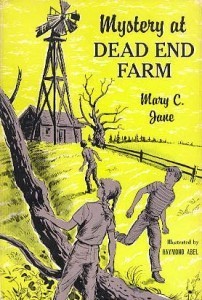 named Priscilla and her brother Lee, visiting their uncle’s Aroostook County potato farm with their widowed mother. When Priscilla and Lee join forces with their cousin, they learn that their eccentric Swedish neighbor Nils has gone missing. Nils is working on a potato-picking invention, and there’s rumor that he has a lead mine on his property that once belonged to the Native Americans (Indians, in those days) who lived in the area. There’s a subplot involving a crashed airplane, and another one involving a white deer the kids want to trap and tame in order to protect it from hunters.
named Priscilla and her brother Lee, visiting their uncle’s Aroostook County potato farm with their widowed mother. When Priscilla and Lee join forces with their cousin, they learn that their eccentric Swedish neighbor Nils has gone missing. Nils is working on a potato-picking invention, and there’s rumor that he has a lead mine on his property that once belonged to the Native Americans (Indians, in those days) who lived in the area. There’s a subplot involving a crashed airplane, and another one involving a white deer the kids want to trap and tame in order to protect it from hunters.
The mystery is solved in 120 pages, complete with illustrations by Raymond Abel of clean-cut boys and girls lurking on hillsides and creeping through abandoned tunnels. In the end (spoiler alert!) Nils returns from having sold his potato-picking invention, and signs over any profits from the lead mine to the local tribe. Priscilla and Lee wind up staying on the farm when they learn their mother and Uncle Ted – their dead father’s brother – have become an item. The final pages are filled with simple resolutions and blueberry pie, as Priscilla ponders the lessons she’s learned.
Mary’s love for both Maine and its people – particularly the children – comes through clearly in her books. On the final page of Dead End Farm, Priscilla ponders the landscape as the family discusses the future of the white deer the kids found in their travels.
She turned her eyes to the rolling potato fields, high, wide, and windswept under the arching sky. What a free kind of country Aroostook was! It didn’t seem right, here, to keep anything – even a deer – penned up and a prisoner…
“It’s wonderful to be safe,” she said, “but it’s even more wonderful to be free. I think we should let the white deer go.”
When I was in third grade, I wrote to Mary and asked if she would speak to my class. I was a shy, pudgy kid with glasses, vacillating between becoming a writer, a jewel thief, or a veterinarian. I had already read every book Mary had written, burning through a mystery a day, and had even convinced our teacher to read one aloud to the class. Mary wrote back, agreeing with great enthusiasm to join us for an afternoon.
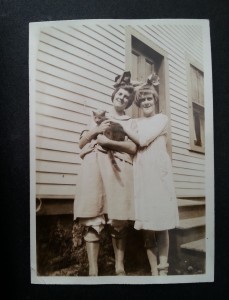 Afterward, I was allowed to leave school early to have lunch at home with Mary and my great grandmother. I remember their laughter and the stories they told, Mary’s generosity, and what a keen interest she seemed to take in my own writing. It was the only time we ever met, though we exchanged letters for many years after that. When I started writing poetry and submitting my work to competitions in high school, she weighed in with tips, critiques, and encouragement, in letters I still have today.
Afterward, I was allowed to leave school early to have lunch at home with Mary and my great grandmother. I remember their laughter and the stories they told, Mary’s generosity, and what a keen interest she seemed to take in my own writing. It was the only time we ever met, though we exchanged letters for many years after that. When I started writing poetry and submitting my work to competitions in high school, she weighed in with tips, critiques, and encouragement, in letters I still have today.
Mary’s books can still be found in libraries throughout Maine, her prose and Raymond Abel’s illustrations a reminder of a simpler time. What I find comforting, however, is that while the world has unquestionably sped up and gotten a little more complicated, in many ways Maine’s quiet back roads and rural country charm remain the same. We still rely on our neighbors; we still cherish our quiet spaces; we still believe freedom to go our own way and march to our own drummer is the best way to live.
If you haven’t checked out Mary C. Jane’s mysteries, I recommend taking a look for yourself. She remains a favorite of mine, even now. Is there a series or author that got you interested in reading when you were young? I’d love to hear about the books that first got you hooked on mysteries!
Jen Blood Bio:
 Jen is author of the bestselling Maine-based Erin Solomon mysteries, a five-book series telling the story of investigative reporter Erin Solomon as she strives to solve the mystery of an alleged cult suicide she witnessed off the coast of Maine as a child. The final book in the series, The Book of J., was published in February. Jen holds an MFA in Creative Writing from the University of Southern Maine, and has worked as a freelance journalist for magazines and newspapers from Maine to Oregon. She currently lives in the midcoast, where she runs Adian Editing, providing expert editing of plot-driven fiction for authors around the world. Her next novel, Midnight Lullaby, will be out in June.
Jen is author of the bestselling Maine-based Erin Solomon mysteries, a five-book series telling the story of investigative reporter Erin Solomon as she strives to solve the mystery of an alleged cult suicide she witnessed off the coast of Maine as a child. The final book in the series, The Book of J., was published in February. Jen holds an MFA in Creative Writing from the University of Southern Maine, and has worked as a freelance journalist for magazines and newspapers from Maine to Oregon. She currently lives in the midcoast, where she runs Adian Editing, providing expert editing of plot-driven fiction for authors around the world. Her next novel, Midnight Lullaby, will be out in June.
Our 1913 Mile Drive from Key West to New England
Hi. Barb here. I just got home today after driving with my husband from Key West, where we spent two glorious months, to Somerville, MA, where we live in the winter.
It was a long trip, with time off for a day in historic Charleston (totally recommend it), two nights with my fellow Wicked Cozy Author, Sherry Harris in Virginia, lunch with my nephew and his family in DC, two days with our son, daughter-in-law and almost two year-old granddaughter in Connecticut, and a quick tour of wedding venues in the Berkshires with our newly engaged daughter and her fiance.
I thought I would have plenty of free time to work on blog posts, but it traffic jams, snow in unexpected places and visiting precluded it. So I am rerunning the post from the first time we drove the route in October, 2012. I am happy to report there are now three Dunkin Donuts between Key West and Key Largo, so things are looking up!
Hi. Barb here. Just returned from the 1913 mile drive from Key West to our winter home outside Boston in a 16-foot Penske rental truck I described as like riding inside Big Bird.
My Mom sold her house in Key West after 13 years. She already has a house full of stuff up north, so she offered the contents to the rest of the family. One by one people put their hands up. Bill and I took the dining room set, my brother and his wife took the bedroom. My son and daughter-in-law wanted the china and the patio furniture. All the grandchildren wanted some of the artwork and my mother wanted a few important pieces returned to her.
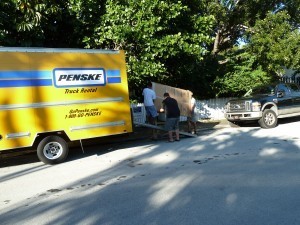
Loading the truck in Key West.
So after much debate, my husband I and decided the only thing to do was to go to Key West, pack up all the various pieces and drive north, stopping to deliver the goodies along the way, like Santa Claus.
Between book deadlines, the New England Crime Bake which I’m co-chair of this year and various other commitments, we found a very specific week-long window. We flew to Key West and spent three exhausting days packing. And treating ourselves to lots of special meals out. Luckily, we’re returning to Key West with my Mom for the month of March (staying in a rented condo), so everything didn’t have that “our last meal ever at such-and-such” emotional overhang.

The gps showing 1446 miles to my mom’s house in Pennsylvania.
We started out Saturday a week ago today at about 1:30 in the afternoon. It’s 100 miles to get off the Keys. The most astonishing part about this beautiful leg of the journey is that there is not a single Dunkin Donuts between Key West and Key Largo. This is a shock to the system for New Englanders who come from a place where Dunkin Donuts is legally mandated to have a location every three-quarters of a mile. So much so, that when we meet other people who travel in the Keys, they always remark on it. “Do you know there’s not a single Dunkin Donuts between Key Largo and Key West? We drove to Key West one day just to get a cup of coffee!” As it happens, they’re building one in Marathon, which is about at the half-way point, but it’s a snare and a delusion, because it’s not open yet. Luckily, there is a Dunkin Donuts app for the iPhone (of course) that will tell you where every single DD is, including the in-truck-stop self-service ones, and this would prove critical for the journey.

The remnants of the Overseas Railroad, built by Henry Flagler between 1905 and 1912. Wiped out by a hurricane in 1935, it was never rebuilt.

The gps for day 2 showing 1149 miles to my Mom’s house.
Me: “Stop driving over curbs. And it can’t be good for the tires.”
Husband: “Do you want to drive this #$%^ truck?”
Husband: (Hours later in an apparently unrelated comment): “Boy, it’s a good thing this truck has double back tires. That way if one goes–”
Me: No comment whatsoever. (I am not completely crazy.)
We made it to Vero Beach the first night. Boy, Florida is a big state. It was amazing how much cooler and less humid it was in Vero beach than Key West.

The Dames Point Bridge in Jacksonville. Built in the 1980s, it is the longest concrete cable-stayed bridge in the U.S. Six lanes wide, two miles long and supported by 21 miles of steel cables, the bridge looks like two sailboats rising 175 feet above the St. Johns River.

GPS day 3 in Florence, SC. 620 miles to Mom’s.
Us–Listening to the Patriot’s Game on Bill’s iPhone over the internet through the truck’s radio: “It’s a technological miracle!”
Us–after the internet crapped out, finding the Patriot’s game on the AM radio: “What a stroke of luck!”
Waitress: After we attempted to order a drink and watch the end of the game at Fatz’s Cafe in Florence, South Carolina: “No alcohol on Sundays. This is the bible belt.”
Us: “Huh?”

At this North Carolina diner, you can order either city ham or country ham with your eggs.
We ate at a lot of terrible chain restaurants. When your criteria are, “We have to be able to see the restaurant from the highway,” and, “We have to be able to park a truck there,” you have to lower your food standards considerably. The diner above was a happy exception.

Hagerstown, Maryland, day 4. Only 193 miles to Mom’s!
Considering that we drove through four putative swing states, I was astounded by how few bumper stickers we saw. Two Obama (Florida and South Carolina), one Romney (Virginia) and one “Beware of Liberals Pretending to be Americans” in Georgia.
I guess it’s true–it’s all air wars on TV now, which I think is weird because I know fewer and fewer people who watch regular TV, much less commercials. But what do I know? I will say, when we got off the highway to go to my son’s in Connecticut, there were lawn signs for every single elected office imaginable on almost every lawn.
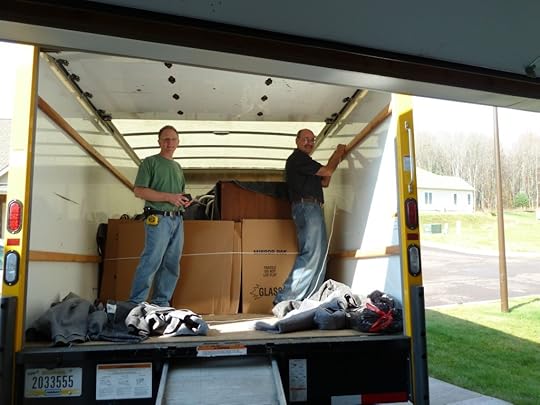
My brother Rip and my husband Bill unloading the truck at Mom’s.

232 miles from my Mom’s to our son’s house in Connecticut.
Now on to my son and daughter-in-law’s house in Connecticut. We dropped off my mother’s bedroom set at my brother’s house, and he and his wife passed on two bureaus to our kids, so we had new cargo.
Even as we’ve driven all this way, I keep reminding myself that my son WALKED 1000 miles from Springer Mountain, GA to Harper’s Ferry, WV on the Appalachian trail so what am I complaining about?
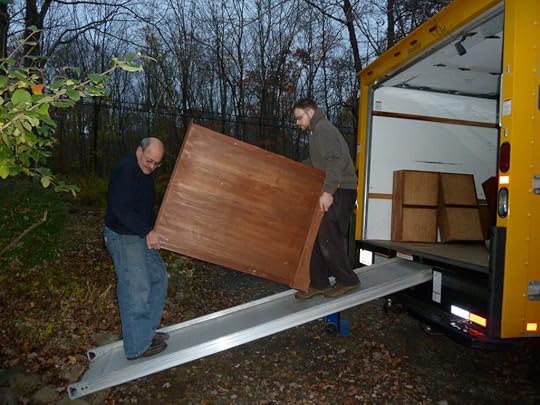
Unloading at Rob and Sunny’s. Third unload of the day. Bill’s pretty tired by this point.

Only 117 miles to go.
Almost home. Definitely feeling how Santa must in those pre-dawn hours on Christmas morning.
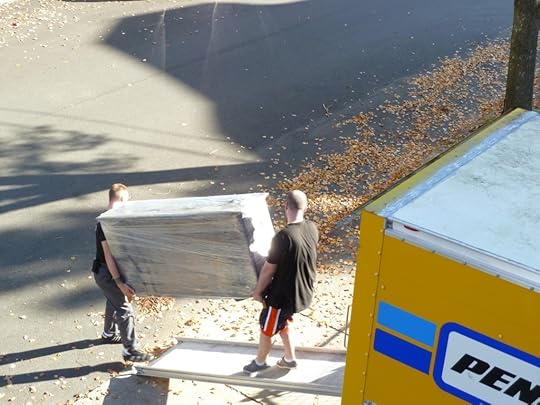
Professional movers (yay!) unloading at our house in Boston the next morning.
 Home. Exhausted. House is a mess.
Home. Exhausted. House is a mess.
Somehow this vase made the whole trip INSIDE the buffet you see in the picture above and didn’t break.
But what about Maine, you ask? What about that last 164 miles? Isn’t this the Maine Crime Writers? Well, in a couple of weeks our old dining room furniture (pictured below) will be put on another truck and we’ll take it to our house in Maine. And put the dining room furniture there on the truck and take it to the dump, where some other family will start the whole chain again. And who knows where that may end up?
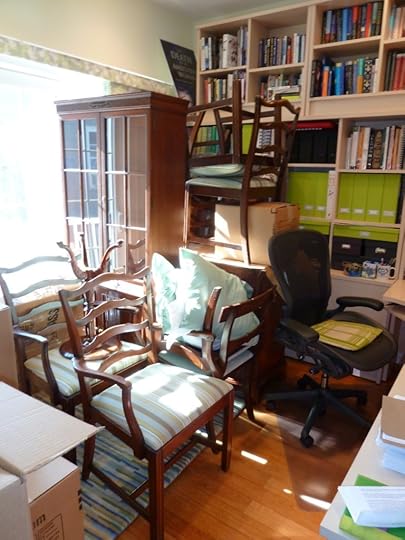
Our old dining room furniture, headed now to Maine.
Lea Wait's Blog
- Lea Wait's profile
- 509 followers


